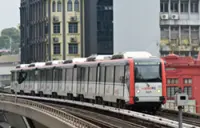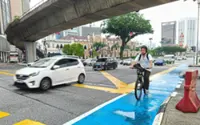The Tun Razak Exchange project is a 28ha master-planned development in the city centre, conceptualised to enable KL to be a financial hub with a seamless business environment for financial services firms, multinational companies and ancillary businesses.
THE term “environmental, social and governance” (ESG) may sound like a buzzword as the global shift towards a greener economy accelerated in the post-pandemic world. But the concept of sustainability has long existed.
In the financial world, the practice of socially responsible investing dates as far back as the 1960s, when investors avoided stocks or industries with exposure to value degrading and unsustainable business activities.
The ESG phrase was first coined at the Who Cares Wins Conference organised by the World Bank in 2005, which brought together institutional investors, global consultants, government bodies and regulators to examine the role of these value drivers in financial asset management. The participants concluded that ESG factors play a huge role in the context of longer-term investment.
ESG investing has since grown to account for over US$35 trillion (about RM147.8 trillion) in global assets in 2020. According to Bloomberg Intelligence 2021, this figure is projected to rise further to surpass US$50 trillion (RM211.1 trillion) by 2025 – representing more than a third of all professionally managed assets around the world.
In Malaysia, the government has set an ambitious target to cut down emissions by 45% by 2030 in its 12th Malaysia Plan. With rising investor interest at home and abroad in companies and products that incorporate ESG elements, performance in these metrics will be increasingly important in real estate development.
In a clear indication, 60% of respondents in CBRE’s 2021 Global Investor Intentions Survey said that they have already adopted ESG as part of their investment strategies, practising ESG considerations at every stage of the property lifecycle – from due diligence, acquisitions, leasing, monetisation to asset management.
In real estate, environmental performance perhaps has the most obvious impact among the three factors. After all, buildings are responsible for 39% of global energy-related carbon emissions as reported by the World Green Building Council (WGBC). With extreme weather events associated with climate change becoming more common, strategies to navigate through future crises are now a necessity for developers.
Initiatives such as the WGBC’s Net Zero Carbon Buildings Commitment, which calls for all buildings to have net-zero carbon emissions by 2050, is fast gaining prominence. Implementing green leases, whereby tenants commit to or gain incentives by participating in water or energy conservation, waste reduction and other environmental preservation efforts, is another growing trend.
Yet the benefits of a greener built environment are beyond financial and compliance, and by now, is an absolute necessity.
Tun Razak Exchange is green by design. Our sustainability aspirations were embedded in the masterplan drawn more than a decade ago. Right from the start, TRX’s development code entails holistic sustainability strategy that covers everything from energy and water efficiency, digital backbone resiliency, to community welfare and efficient public transportation.
Since we were mapping out a brand new CBD for Kuala Lumpur, we had the opportunity to sketch a commercially viable, vibrant yet highly liveable international financial centre that responds to modern demands.
Driven by the same ESG principles to improve quality of life while taking care of the environment, TRX City laid down guides that end up turning almost a quarter of TRX into green spaces for open plazas, city parks and green streetscapes that will be KL’s ultimate “grand place”.
Internet of Things (IoT) solutions are now applied to achieve energy savings and improve operational efficiency, while at the same time ensuring mobility in and around TRX is seamless, with easy access by rail, road, and especially on foot.
Our partners are on board with our sustainability commitments; it is not just what you say, but what you do.
Our joint venture with Lendlease, which is developing The Exchange TRX lifestyle hub, conducted a climate change adaptation and resilience study to identify risks to ensure the project is future-proof, applying design features like awning structures to combat heatwave and stormwater systems to minimise urban flood risks.
With reduced energy use by conserving resources through an on-site water treatment and recycling plant as well as efficient management of operational waste, we believe TRX has been designed as one of the region’s most progressive and sustainable new city precincts – on top of providing the right ecosystem to become Asia’s new international financial district.
Datuk Azmar Talib is CEO of TRX City Sdn Bhd.






